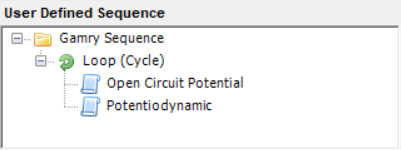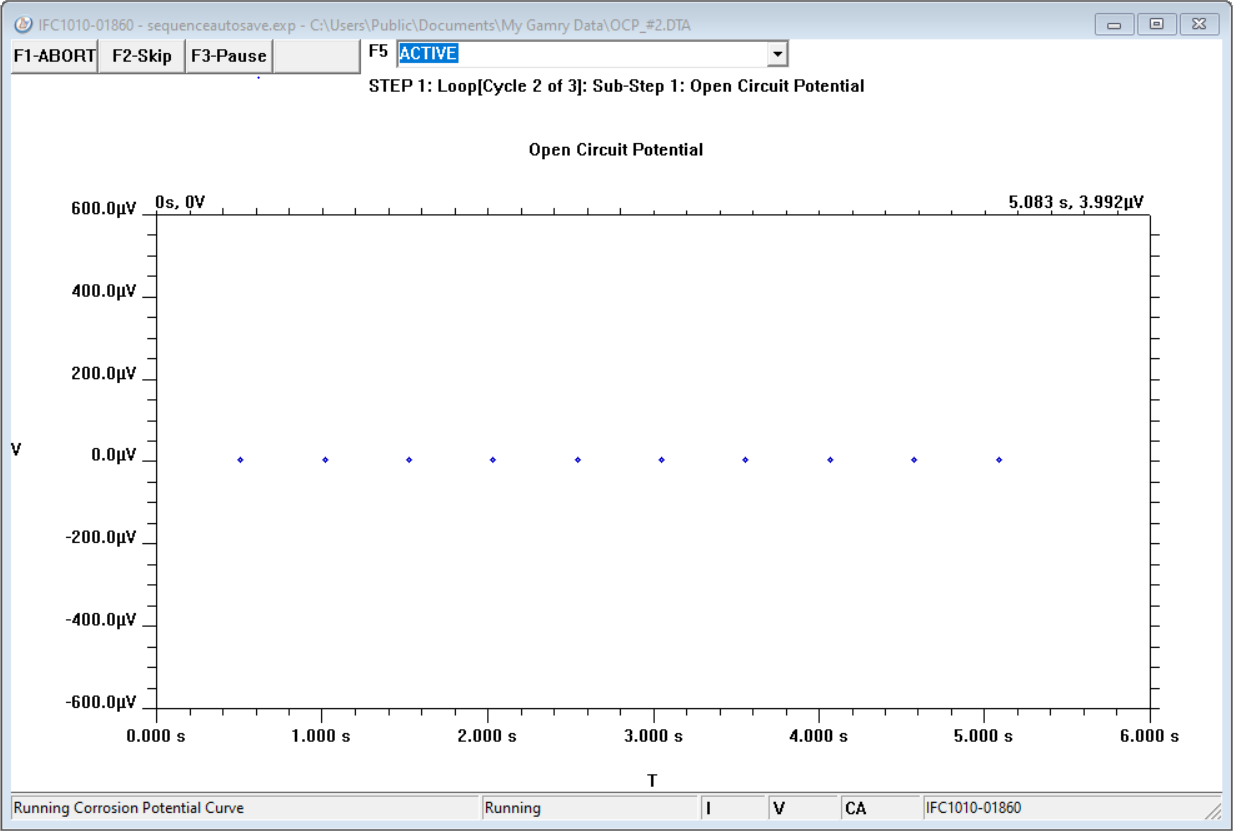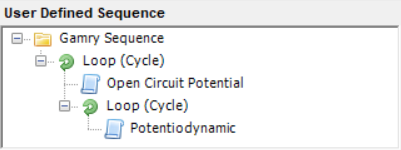Description
Gamry's Sequence Wizard is designed to create unique file names for tests conducted within a loop. This section provides a detailed explanation of how these file names are generated.
Simple Example
Below is a simple example consisting of two consecutive experiments. The sequence begins with an Open Circuit Potential experiment, followed by a Potentiodynamic scan:

Each step in the sequence that generates a data file has an associated Output File setup parameters to enter a file name. The steps in this example have Output files entered like those shown below:


When we run this simple sequence, two data files are generated:
When we run this simple sequence, two data files are generated, OCP.DTA and POTDYN.DTA.
In summary, if no loops exist, the Output File is used as entered in the Setup dialog box.
Advanced Example
Below is a more advanced example which has a loop. When loops are part of the sequence, the Output File name is used as a Base Filename, with the loop number being appended to the end. Essentially, the trailing *.DTA is removed (if it exists at all), an underscore followed by the # sign and the loop cycle is appended, and then the trailing *.DTA is placed back. Let's see how it works for the following sequence:

Both experiment steps are now within a loop. For the loop, we entered a Loop Count of 3 as shown below.

The Output Files for each of the two sub-steps are as they were before:


Now, when we run the sequence, output files for each cycle are generated:
•For Cycle #1: OCP_#1.DTA and POTDYN_#1.DTA
•For Cycle #2: OCP_#2.DTA and POTDYN_#2.DTA
•For Cycle #3: OCP_#3.DTA and POTDYN_#3.DTA
When the sequence is running, the current data file being written to is always given in the title bar. See the following screenshot, where the current data file is OCP_#2.DTA:

In the event there are nested loops, an additional cycle number is appended to the data file name in the same manner as when there is only one loop. Look at the following sequence:

For the outer loop we have a loop count of 3. For the inner loop we have a loop count of 4. Our Output File names are as before. Now, when we run the sequence, output files for the Open Circuit Potential step in the outer loop are generated as before:
•For Outer Loop Cycle #1: OCP_#1.DTA
•For Outer Loop Cycle #2: OCP_#2.DTA
•For Outer Loop Cycle #3: OCP_#3.DTA
The Potentiodynamic step, however, is now a child of the inner loop. It generates files like the following:
•Outer Loop Cycle #1, Inner Loop Cycles #1 to #4:
oPOTDYN_#1_#1.DTA
oPOTDYN_#1_#2.DTA
oPOTDYN_#1_#3.DTA
oPOTDYN_#1_#4.DTA
•Outer Loop Cycle #2, Inner Loop Cycles #1 to #4:
oPOTDYN_#2_#1.DTA
oPOTDYN_#2_#2.DTA
oPOTDYN_#2_#3.DTA
oPOTDYN_#2_#4.DTA
•Outer Loop Cycle #3, Inner Loop Cycles #1 to #4:
oPOTDYN_#3_#1.DTA
oPOTDYN_#3_#2.DTA
oPOTDYN_#3_#3.DTA
oPOTDYN_#3_#4.DTA
The first appended cycle number belongs to the outer loop, and the second appended cycle number belongs to the inner loop. If you can remember this, you will be able to locate your data files with ease.